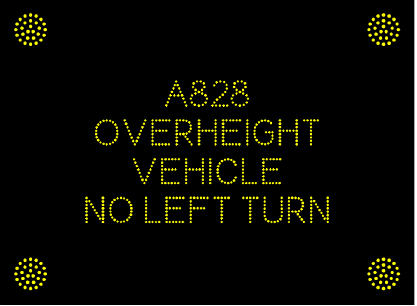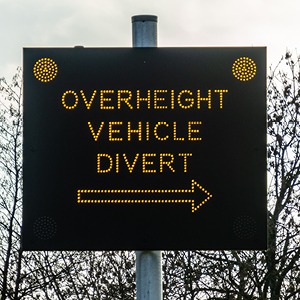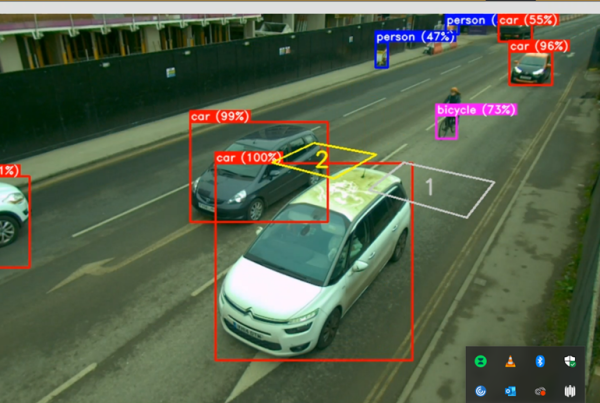While the UK continues to take cautious steps out of lockdown, many outdoor tourism attractions are already inundated with record numbers of visitors. The spirit of the ‘staycation’ seems to already be in full swing and this year more visitors than ever are to have a holiday in the UK as uncertainty around international travel, even to Europe, continues.
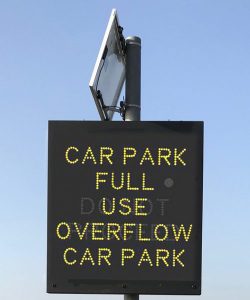 According to the Department of Culture, Media and Sport, even pre-pandemic, England looked set to hit 100 million domestic overnight trips in 2020. In 2019, 41 million international visitors came to the UK for business or leisure, spending over £28 billion whilst here and putting the UK in the top five countries globally for inbound visitor spending.
According to the Department of Culture, Media and Sport, even pre-pandemic, England looked set to hit 100 million domestic overnight trips in 2020. In 2019, 41 million international visitors came to the UK for business or leisure, spending over £28 billion whilst here and putting the UK in the top five countries globally for inbound visitor spending.
Recently, the Government announced that new plans to offer a new rail pass and vouchers for popular tourist attractions are at the heart of a plan to return domestic tourism to pre-pandemic levels by 2022 and international tourism by 2023.
A £10 million voucher scheme will be launched by The National Lottery this autumn to encourage trips beyond the peak summer season, with players having the chance to claim vouchers to redeem at tourist attractions across the UK between September 2021 and March 2022.
A rail pass for staycationers will be launched later this year, helping to make it easier and more sustainable for domestic tourists to get around the country. The new pass will build on the success of the BritRail pass, which is sold through VisitBritain and currently gives international visitors flexible travel across the country, as well as providing discounted entry to tourism attractions.
There will also be a new focus on technology and data. The government will explore how tourism data collected at the border can support the sector and will look to create a tourism data hub to give the sector access to robust, accessible and timely data. The hub could track consumer trends in travel, such as the growth in ‘active tourism’ such as watersports, hiking, and booking of sustainable tourism experiences. The data gathered will help inform policy and marketing whilst working to improve visitor experience.
But how are local authorities preparing for the new volumes of visitors to UK tourist attractions? Despite the move towards more alternative methods of travelling, the majority of staycations will start by car, camper van or motorhome on the UK road network.
In Scotland, the Highland Council has recently updated its Tourism Strategy.
Ahead of a busy summer season, new funding and planning was announced across the Highlands and Islands. With visitors already flocking north, improvements are being made to the facilities available for road users. It is estimated that 6.4 million holidaymakers are expected over the summer.
Estimates suggest around 16million people, a third of all UK adults, are planning a post-lockdown break by September, and around 40% of those are intending to spend time in Scotland. With about two in five Scots holidaymakers heading for the Highlands, the north could see 2.3million visitors as industry figures fear the region will struggle to cope with the numbers.
The Rural Tourism Infrastructure Fund (RTIF) has supported many tourism projects across the Highlands. It aims to enhance visitor experience, develop infrastructure and manage and improve visitor facilities, according to the Press and Journal. Approximately £3million has already been set aside for the fund and a fourth round of applications are being accepted now.
David Richardson, the Federation of Small Businesses’ Highlands & Islands development manager said: “The good news is that the staycations resulting from the Covid travel restrictions are showcasing the Highlands to a much wider audience than we have seen since before the days of Mediterranean package holidays.
“The bad news is that they are exposing both the strengths and the weaknesses of what should be a uniformly world-class holiday destination. Much of our infrastructure has become increasingly run-down over the years and it simply isn’t fit-for-purpose anymore.”
Among the applications that have been submitted for the next round of funding are improved parking, new toilet facilities, EV charging points and waste disposal facilities. Tourist attractions that could receive the funding include Sandwood Bay, Ullapool and Glencoe, according to the report.
Highland Council’s tourism committee is also exploring an official approach to the overnight parking of motorhomes. The intention is to identify key sites for motorhomes to park in overnight, with the appropriate facilities, to avoid roadside parking.
But often, its closer to popular tourist attractions when the challenges become significant. One of the biggest is effectively communicating to the travelling public, especially in real-time, updating them on whether roads are busy and car parks full, which is even more relevant on the many single-track roads that lead to the many in-land and coastal beauty-spots and attractions.
Recently infrastructure technology and signage specialist Coeval has been helping support work in the Highlands to provide a solution to the problem. One example is at Chanonry Point on the Black Isle, a popular place to watch dolphins in Scotland. This narrow peninsula is an ideal location with views across the Moray Firth to Fort George. The problem here is that the car park only has 37 spaces, and the single-track road presents problems when traffic levels are high and lots of vehicles are passing.
“This can lead to congestion and other problems when the site is busy so we are looking to implement Coeval signage with other sources of data such as from ANPR camera’s so traffic officers can change the message to inform drivers that the car park is full or there is congestion on route,” says Shane Manning, Principal Traffic Officer at the Council. “Our strategy is that if we can warn drivers of issues early enough then those problems on the network won’t escalate into something else,” he adds.
Coeval is a specialist in robust, LED road sign-based systems that advise, inform, educate and protect. With a single sign that serves multiple functions, Variable Message Signs (VMS) both fixed and portable, are an ideal LED signage solution for influencing road user behaviour. Coeval supplies a complete range of LED signs from single line to full colour matrix, and urban VMS with a wide range of pictograms and text messages.
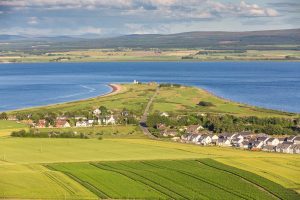 Elsewhere at Glencoe, there is another single-track several miles long that leads to another area of significant natural beauty which is also a popular area for camping and for motorhomes. “Here we want to be able to be able to implement a plan that identifies the threshold of vehicles entering and exiting the site. “Then, using the signs linked to the real-time data, we can keep visitors up-to-date in advance of entering the site. This is something we would like to see taken forward to other sites,” adds Mr Manning.
Elsewhere at Glencoe, there is another single-track several miles long that leads to another area of significant natural beauty which is also a popular area for camping and for motorhomes. “Here we want to be able to be able to implement a plan that identifies the threshold of vehicles entering and exiting the site. “Then, using the signs linked to the real-time data, we can keep visitors up-to-date in advance of entering the site. This is something we would like to see taken forward to other sites,” adds Mr Manning.
He says that Highland Council’s tourism management plan commits to investing in different types of infrastructure including £1.5 million of extra funding for infrastructure including extra waste bins, toilets and manpower in the form of 17 extra countryside rangers, to help during the busy summer period. “We have re-structured our regional operational groups and the experience of this summer will guide us to make further changes and investment priorities to better meet the growing demand from tourists’ year-on-year,” adds Mr Manning.
Ian MacGillivray, Director, Sigma PM Limited who act as consultants to the National Trust of Scotland as well as some of the country’s community organisations, has been brought in to help tackle some of the issues that have come from the increase in numbers visiting the Highlands.
“One of the major issues we had last year after lockdown was that more people made the decision to travel in camper vans and motorhomes and this did cause huge amounts of congestion in some of our more popular tourist hotspots, such as Glen Etive. One of the most extensively used roads is single track and about 14 miles long and it was taking an hour to drive on some days instead of 30 minutes. This road became very congested and given its narrow width, it is difficult to reverse and manoeuvre on so vehicles have no choice but to carry on,” says Mr MacGillivray. “This is where the combination of signage and data collection will enable us not only to provide bespoke messages to the travelling public in response to what’s happening at that particular time but capture better information to help us make intelligent decisions.”
Coeval has a range of vehicle activated signs that can be used for hazard warning or to display vehicle speed measurements.
Coeval’s Vehicle Activated Hazard Warning Signs (VAS) are designed to support hazard awareness by helping to protect them and others by warning of potential hazards. The company designs, builds, installs and maintains bespoke technology solutions that advise, inform and protect road users and help to reduce driver error.
The company’s products have a robust build, with high-power LEDs that can be seen clearly even in hazardous conditions or inclement weather. With bespoke VAS Coeval can provide the right road signage for all rural and urban environments. These offer a Cloud Control application for remote monitoring and data provision and are vehicle activated via integral or external radar or using 3rd party detection systems as well as having five levels of automatic dimming options.
Gordon Stitt, Operations Director at Coeval added:
“We have had several enquiries, especially from Scotland, asking us to help provide solutions that can help keep the public informed and educated so that they can make the right decisions on where to go and when during busy periods around popular tourist attractions to avoid congestion and other incidents. Alongside this, we are able to provide local authorities and other organisations the ability to more accurately monitor visitors to their attractions and react accordingly.”

